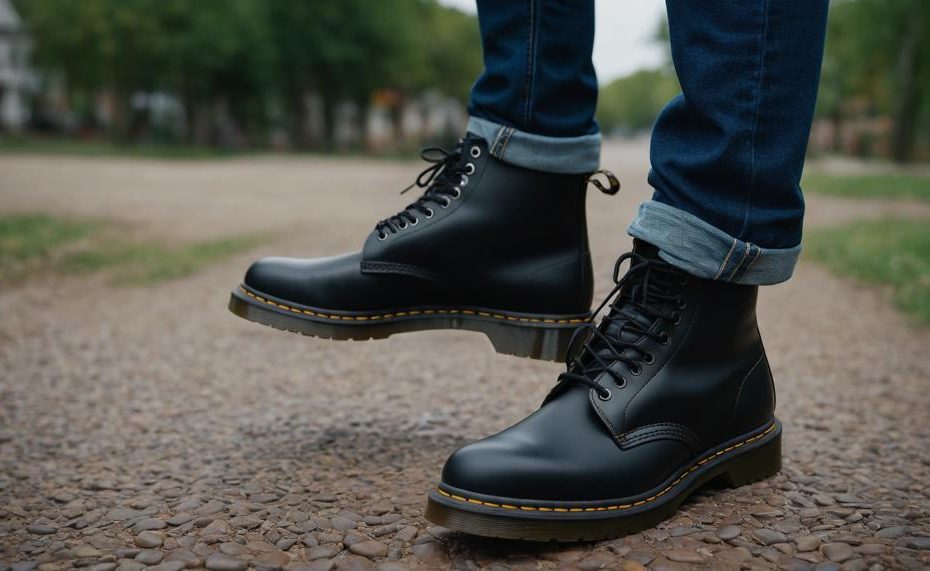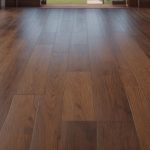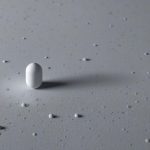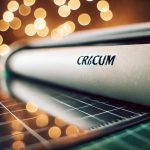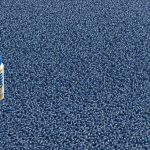Yes, Doc Martens’ soles are glued on.
But that’s just part of the story. If you’re curious about the construction of these iconic boots, there’s more to know. Doc Martens are renowned for their durability, comfort, and unique style, and the way they are made plays a huge role in this.
- Glued Soles: Yes, the soles of Doc Martens are glued on, but that’s not all. The glue helps to initially hold the parts together during manufacturing.
- Goodyear Welt Construction: Doc Martens also use a process called Goodyear welting. This involves stitching the upper part of the boot to the sole, making them exceptionally durable.
- Air-Cushioned Soles: One of the standout features of Doc Martens is their air-cushioned soles, which provide extra comfort and support.
- Heat-Sealed: The boots are not just stitched; they are also heat-sealed, adding another layer of strength to the construction.
This combination of methods ensures that Doc Martens are built to last. Whether you’re stomping through city streets or spending hours on your feet, these boots are designed to withstand a lot of wear and tear. The attention to detail in their construction is one of the reasons why they’ve remained a favorite for decades.
Table of Contents
How Doc Martens are Resoled
No, Doc Martens cannot be effectively resoled with just glue. The correct method involves a combination of specialized tools and techniques.
The traditional method for resoling Doc Martens is known as the “Goodyear welt” technique, which includes several key steps:
- Sole Removal: The original sole is carefully removed. This process requires skill to avoid damaging the upper part of the boot.
- Preparation: The upper and welt are prepared for a new sole. Any remaining glue or debris is meticulously cleaned off.
- New Sole Attachment: The new sole is attached using both stitching and heat-sealing techniques. Glue is used to provide an initial bond, but the durability comes from the stitching and sealing process.
- Final Finishing: The boots are polished, and any additional repairs or adjustments are made to ensure they look and function like new.
Table of Resole Methods for Doc Martens
| Step | Description | Tools/Materials Used |
| Sole Removal | Carefully detach the original sole without damaging the upper. | Specialized cutting tools |
| Preparation | Clean and prepare the upper and welt for a new sole. | Cleaning agents, scrapers |
| New Sole Attachment | Attach the new sole using stitching and heat-sealing. | Goodyear welting machine, stitching threads, glue |
| Final Finishing | Polish and make final adjustments to ensure quality. | Polish, brushes, minor repair tools |
How Goodyear Welted Boots are Resoled
The Goodyear welt method guarantees a secure and enduring bond between the sole and upper of a boot during resoling due to its unique construction technique. This method involves stitching the upper, welt, and insole together through a process called welting. Here’s how it works:
- Stitching Process: The upper and insole are stitched to a strip of leather (the welt) using a lockstitch method. This creates a robust and flexible bond, ensuring that the parts remain securely attached even under stress.
- Welting: The welt acts as an intermediary layer between the upper and the sole. When resoling, the old sole is removed, but the welt remains intact. A new sole can then be stitched to the existing welt, preserving the boot’s structural integrity.
- Stitching Durability: The lockstitch used in Goodyear welting does not unravel if a stitch is broken, enhancing the durability of the bond. This is crucial during resoling, as it maintains the strength and alignment of the boot’s components.
- Ease of Resoling: The welt provides a ready attachment point for a new sole, simplifying the resoling process and ensuring that the upper and insole are not compromised during the replacement.
- Water Resistance: The Goodyear welt method also adds an additional layer of protection against water and dirt, which can penetrate the sole and damage the upper and insole. This extra barrier helps maintain the boot’s longevity.
The Goodyear welt method’s construction ensures that each component of the boot remains secure, allowing for easy and effective resoling without sacrificing durability or performance.
Considerations Before Purchasing DOC Martens
When contemplating the acquisition of Doc Martens, several factors merit attention to ensure you make an informed choice. Here are key considerations to bear in mind:
Comfort and Fit
Doc Martens are known for their unique break-in period. Initially, the leather can be stiff and uncomfortable, but it softens with time, molding to the shape of your foot. It’s crucial to wear thick socks and potentially use band-aids to prevent blisters during this period.
If comfort is a priority from day one, consider the softer leather options like the “Virginia” or “Soft Buck” styles.
Sizing
Doc Martens typically run large. It’s often recommended to size down, especially if you are between sizes. However, this can vary based on the style. For instance, the classic 1460 boots might fit differently compared to the 2976 Chelsea boots.
Always check customer reviews and sizing charts specific to the model you’re interested in.
Material and Durability
Doc Martens are famed for their durability. The traditional models feature leather uppers and the iconic air-cushioned sole, designed to withstand years of wear.
However, there are also vegan options available, crafted from synthetic materials that mimic leather. These are equally durable and cater to those avoiding animal products.
Style and Versatility
Doc Martens come in various styles, from classic boots to sandals and loafers. Each style offers a different look and level of versatility.
The classic 1460 boot is iconic and pairs well with both casual and semi-formal outfits, while the 1461 shoes are ideal for a more understated, everyday look. Assess your wardrobe to determine which style will best complement your existing clothing.
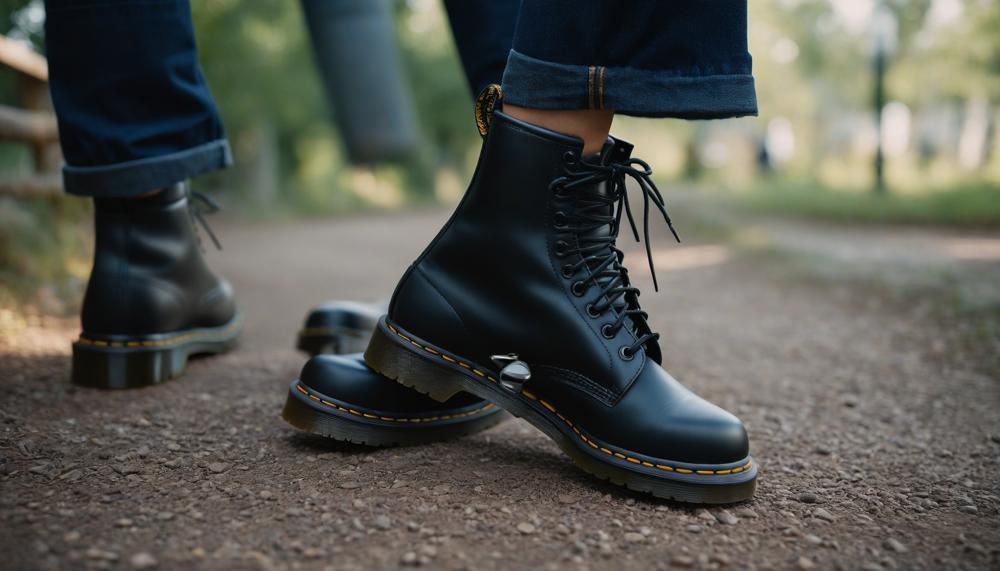
Price and Investment
Doc Martens are an investment. While they are pricier than some other footwear options, their longevity often justifies the cost.
Consider the cost-per-wear, which can be very low over time due to their durability. Additionally, they hold their value well, with second-hand pairs often fetching good prices.
Ethical Considerations
For the ethically conscious shopper, Doc Martens offer vegan options and are known for their efforts towards sustainable practices.
The vegan line is 100% animal-free and made using non-animal origin materials.
Where to Buy
Ensure you purchase from authorized retailers to avoid counterfeit products. Official stores, reputable online retailers, and second-hand shops are good sources. Check for warranty options and return policies, especially if buying online.
In essence, investing in Doc Martens involves considering comfort, sizing, material, style, cost, and ethical factors. This ensures you select a pair that not only fits well but also aligns with your values and lifestyle.
Recommended Dr Martens Alternative: Solovair Black Hi-Shine Derby Boots
Known for their exceptional craftsmanship and heritage, these boots offer a unique blend of style, durability, and comfort.
Why Solovair?
| Feature | Solovair Black Hi-Shine Derby Boots | Dr Martens |
| Craftsmanship | Handmade in England since 1881 | Mass-produced |
| Durability | Goodyear welt construction | Direct attach construction |
| Comfort | Cushioned insole, leather lining | Mixed reviews on comfort |
| Style | High-shine, classic Derby design | Variety of styles available |
| Ethics | Ethical manufacturing practices | Concerns over labor practices |
Conclusion
When considering the craftsmanship of Doc Martens, one might think the soles are just glued on. However, the construction of these iconic boots reveals a meticulous process that goes beyond simple adhesives. Yes, the soles are initially glued, but this is only the beginning.
A hallmark of Doc Martens is the Goodyear welt construction. This technique involves stitching the upper part of the boot to the sole, creating a robust bond that enhances durability. The Goodyear welt method is renowned for its strength and longevity, ensuring that every pair of Doc Martens can withstand the test of time.
Adding to the boots’ resilience is the heat-sealing process, which further secures the stitching and glue, providing an additional layer of fortification. This combination of methods ensures that the boots are not just stylish but also built to endure rigorous use.
Moreover, Doc Martens are famed for their air-cushioned soles, offering unparalleled comfort. This feature is particularly beneficial for those who spend long hours on their feet, as it provides superior support and shock absorption.
For those looking to resole their beloved boots, the process mirrors the initial construction. Removing the old sole, preparing the upper and welt, and attaching the new sole with stitching and heat-sealing maintain the boot’s integrity.
In essence, while glue plays a role, it’s the intricate combination of Goodyear welting, stitching, and heat-sealing that makes Doc Martens a lasting investment.

